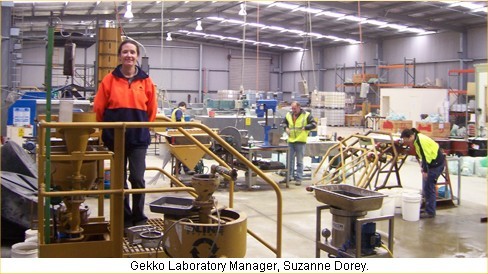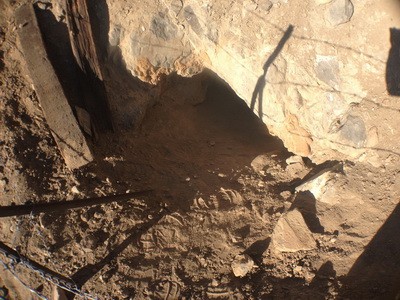Data) Mining for Gold Silver and PGMs Part 1
Post on: 21 Апрель, 2015 No Comment

F ARMINGTON HILLS, Mich. () — Although commercial mining companies in general and sellers of precious metals for personal investment, in particular, do not like to have it widely known, a growing number of dedicated recreational mining amateurs, who have professional backgrounds in geology, metallurgy, mining engineering, cartography, economics and, interestingly enough, finance, are constructing a remarkable open database on the Internet from the vast store of, until now, widely dispersed, contemporary as well as historical records directly or indirectly reporting on American prospecting and mining that are in the public domain.
This information consists of such diverse printed records as individual State mineralogical surveys and USGS (United States Geological Survey) mineralogical surveys, United States Bureau of Land Management (BLM) mineralogical data, State and Federal environmental surveys and environmental impact statements, county, state and Federal assay office records going back, in the case of California, alone, more than 150 years, State and individual county survey records for particular minerals, especially gold and silver, scientific records and papers published by university departments of geology, chemistry and mining, reports and prospectuses published by mining ventures and individuals seeking financing, and the huge volume of reports filed by mining companies active today and those that have become extinct.
Large, well laid out, easy to navigate, Internet sites have become available that cumulate data from the above sources in the form of lists of mines and the known minerals that have been reported found in them. These lists are broken down in most of the sites by State, and, in a growing number of the sites, by individual county. The rapid growth of search engines on the net that have the capability of searching within an Internet site allow a recreational prospector today to sit at his computer, locate a data mine, and search within it for a particular mineral, such as gold. This procedure has also not escaped notice in the research departments of commercial mining ventures and in the research departments of financial institutions.
The union of the publication of this, at this point in time, openly available mine survey data with inexpensive global positioning sensors (GPS), metal detecting equipment and sophisticated portable metal identification equipment has all of the elements necessary to start a new metal rush in America. At the very least, I believe, this information explosion may well lead to a revision of existing estimates of reserves of metals and minerals in the U.S.
I will come return to this theme from time to time over the next few months with regard to specific groups of strategic metals in the United States. Today, however, I want to begin the discussion of data mining with the most popular type of prospecting done either by amateurs or professionals in the United States: The search for gold, silver and the platinum group metals.
The two most prominent Internet sites that give the most comprehensive lists of mine locations by longitude and latitude, current availability (i.e. whether the mine is owned and/or operated currently or is available to be claimed having been abandoned by the rules of the BLM), and mineral composition are:
The search for gold and silver in America appears to have been comprehensive, but, in fact, it has been haphazard to a degree that it will be of value to go over most of the abandoned locations again.
First, this is because most prospectors up until now have only looked for physical gold in the traditional metallic yellow nugget or inclusion-in-quartz form. Even where such deposits were located the discovery may have been made at a time when the site was inaccessible due to a lack of roads or the non-existence of tools or techniques to reach the ore body. There may have simply been no nearby water for processing (e.g. washing to concentrate), and in the century before motorized or rail transportation this was fatal to a mining venture.
Second, and even a more likely factor to cause gold to be overlooked, all gold ores are not bright yellow metallic colored. In California and other Western American locales, gold ore can be black. Solutions of gold in tellurium and selenium have this appearance. And, even though, many early miners recognized this type of ore the very toxic nature of the smoke from roasting it may have sent many such early discoverers to an early reward.
Nonmetallic silver ores were also sometimes overlooked or misidentified.
This brings us to the topic of platinum, palladium, rhodium, iridium and osmium. All of these metals have been found on the American West coast. But almost no revisiting of known strikes of these metals in those regions have been recorded since the boom in usage and price of platinum group metals that began with the requirements for catalytic converters to be fitted on motor vehicles made after the 1976 model year in America.
Osmiridium ores, platinum telluride ores, placer platinum and platinum group metals in chromite ore bodies have all been recorded in California and Oregon. The platinum group metals were of so little value in the early 1900s that assay offices in northern California sometimes listed samples brought in by miners as deducts from contained gold values.
In addition many assays in the nineteenth and early twentieth centuries seem to have listed palladium as silver. The BLM study discussed and listed below explains this. I recommend to all museums in northern California and Oregon that they have their silver ore samples re-assayed for palladium content.
This brings me to the last topic for this article, the past assays themselves. The traditional way of accurately determining the content of precious metals in an ore sample is by fire assay. This is a method of separating and concentrating the precious metal content of an ore sample into a bead of precious metals only that can then be further separated, if necessary, and identified today by absorption or emission instrumental spectroscopic techniques or by noninvasive x-ray or neutron activation techniques.

The fire assay evolved from the medieval method of separating and purifying precious metals by fire. It, the fire assay, was so ingrained into the mind set of the gold industry that the Toronto Stock Exchange, the world’s leading source of capital for mining ventures, had written into Canadian law that the fire assay was to be a necessary step for the legal assay of ores quantitatively as well as qualitatively for precious metals.
Unfortunately for many gold prospectors the fire assay, per se, is far from flawless. In the traditional method used from the Middle Ages until the late twentieth century, the precious metals were collected by mixing the crushed ore with a litharge (lead oxide) flux and then heating the resultant mass in a reducing situation so that the lead formed would percolate through the mass dissolving the precious metals. Then a second firing in a porous ceramic (early on this was made from bone ash) crucible would remove the lead leaving behind a precious metal only containing bead. The accuracy of this method depended on operator skill and uniformity of flux and crucible materials.
A recent blind test by the BLM proved that the above skills were in very short supply in North America. The BLM made up 66 samples of ore containing known amounts of all of the precious metals and sent them out to 66 labs advertising fire assay services for mining. An astonishing 90% of the labs failed to even come close to the correct values!
This test was carried out in the last 10 years. It is easy to imagine how it would have come out 25, 50 or even 100 years ago. Yet a poor result from a fire assay would have eliminated all hope of financing for any precious metal mine. How many such mines have been overlooked and are now abandoned is anyone’s guess, but the fact that they should be re-examined is obvious. The BLM study (the address for which follows this paragraph) found that PGMs were either totally missed, misidentified (palladium as silver, for example), or ignored.
If the above weren’t bad enough it must be noted that if a precious metal ore contains tellurium or selenium then a fire assay may lose some or all of the precious metals as the tellurium or selenium will carry the precious metals into the wall of the crucible rather than let them form the bead. New fluxing materials, notably nickel sulfide, are in use in the fire assay now to eliminate this problem, but fire assay accuracy is still critically dependent on operator skill and experience.
If I were younger and I lived in the Western U.S. or Western Canada, I think I might do some data mining this weekend, and head out in an all terrain vehicle with a GPS, a metal detector, a portable XRF metal identifier and a short list of qualified mineral identification labs in my pocket.














